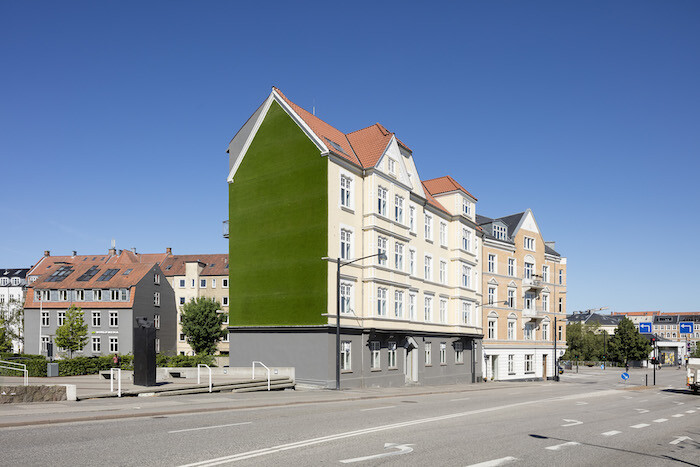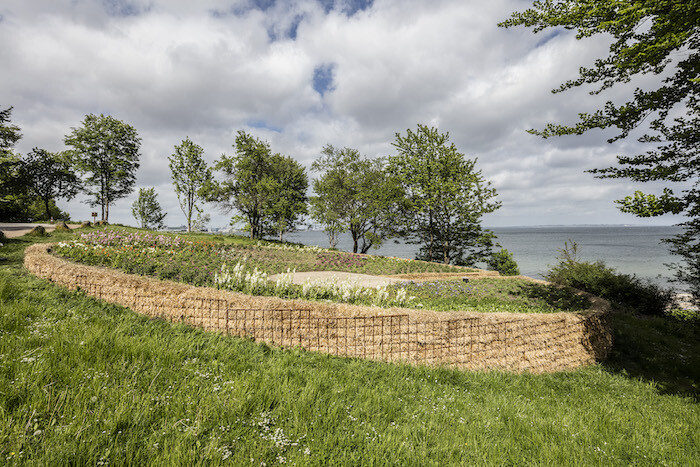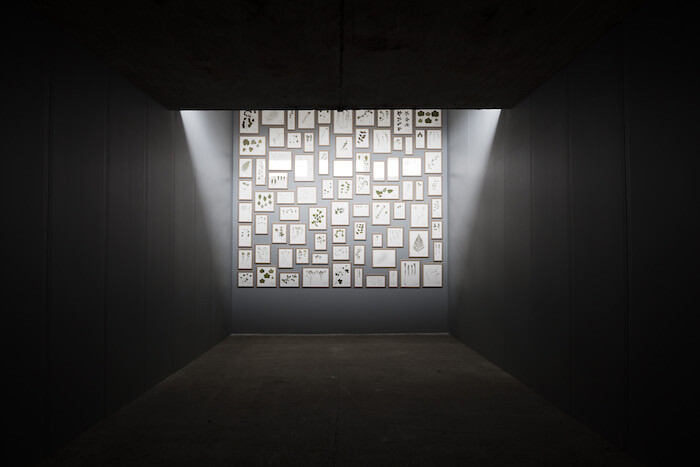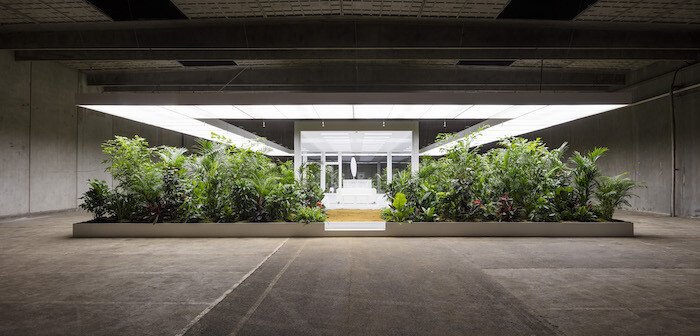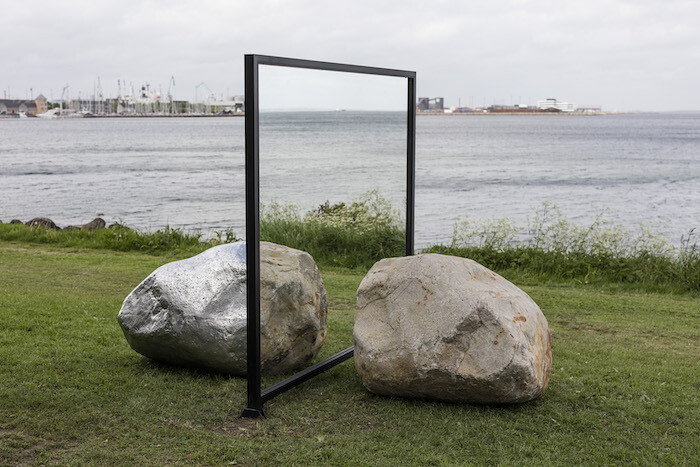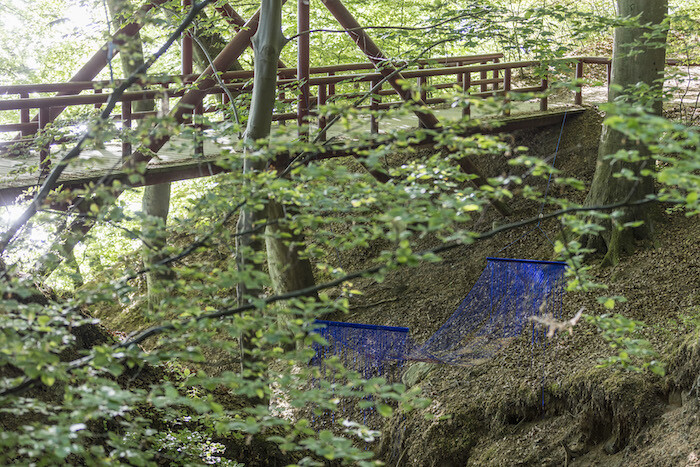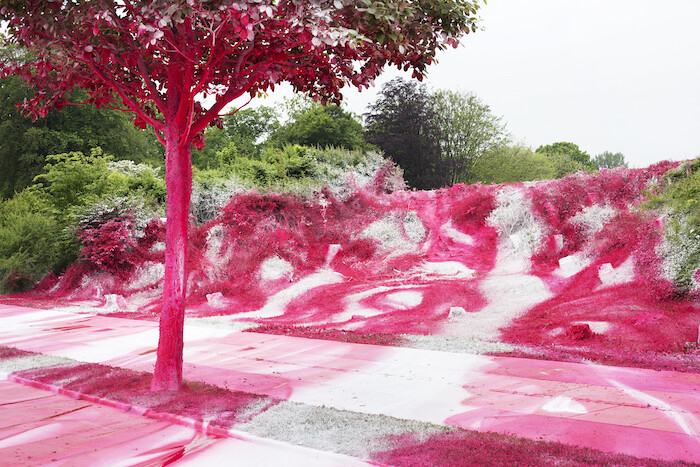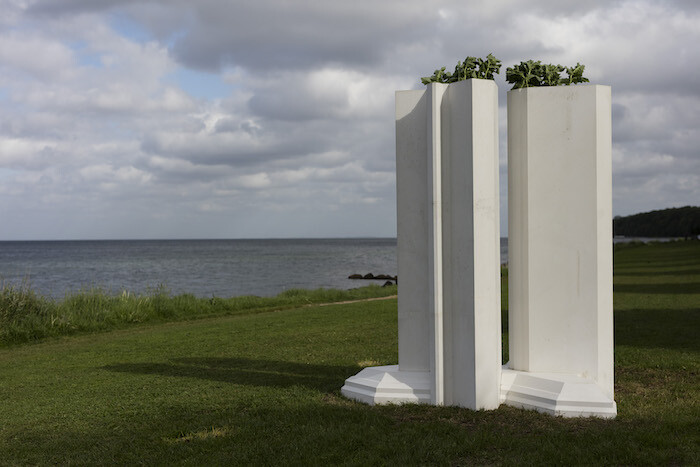The inaugural ARoS Triennial, “The Garden—End of Times; Beginning of Times,” opened in Aarhus, 2017’s European Capital of Culture, on the morning that Donald Trump stood in the White House garden and announced his plans to withdraw the US from the Paris Agreement. ARoS’s director, Erlend Høyersten, promises that this exhibition “will thematize man’s coexistence with, and view on, nature … over a period of 400 years.” Such scrutiny is certainly timely.
The exhibition is installed across three thematic sections, “The Past” in the ARoS Art Museum; “The Present” in the city’s docklands; and “The Future” on its coastline and forest to the south. “The Past” includes 108 works (predominantly paintings) hung in purpose-built galleries painted dark Victorian green. First up are three of Thomas Struth’s “Paradise” series of C-prints (1999, 2005, 2006) all dense, green thickets, “unconscious places” he’s been photographing since 1998. Then appears a room with three large plinths supporting unattributed backlit images of historic Western gardens, French (Versailles), English (a park in Wiltshire), and American (New York’s Central Park). They’re unsightly and unnecessary pedagogical tools, given how regularly this exhibition strays from the leitmotif of the garden. A subsequent hang of Franz Rösel von Rosenhof’s paintings of Paradise Before the Fall of Man (1690/5) and Earth After the Fall of Man (1690) offers before and after shots of earthly paradise’s nosedive into chaos, with animals scattering in pandemonium. This pair introduces the exhibition’s most potent narrative thread, the historic scourge of humans upon nature.
Rooms progress from Baroque and Rococo landscapes to Enlightenment botanical prints, Expressionist and Nordic paintings of the sublime (Edvard Munch’s somber coastline at dusk, Vinter Ved Nordstrand, 1900, is a highlight), to an odd display of Surrealist works (in a section called, rather sinisterly, “Botany of the mind”), and several Land Art pieces, before opening into a sequence of engaging, if diverse, installations by artists including Olafur Eliasson’s Beauty (1993), Diana Thater’s Chernobyl (2011), Joan Jonas’ Light Time Tales (2014), and Darren Almond’s Sometimes Still (2010). Contemporary works occasionally creep back in time. Yinka Shonibare’s sculpture The Swing (After Fragonard) (2001) shows a headless mannequin in a billowing robe à la française fabricated in African Batik print, swinging forward from a branch in the gallery corner. Displayed opposite a similar composition to that upon which it is based, Antoine Watteau’s The Swing (1712), Shonibare’s material alteration asks what was happening in other parts of the world while European nobility frolicked in well-tended gardens. Agnes Denes’s 12 C-prints, Wheatfield – A Confrontation: Battery Park Landfill, Downtown Manhattan (1982) are displayed alongside six paintings by Norwegian artist-cum-horticulturalist Nikolai Astrup; against his dark, neo-romantic rural scenes painted between 1909 and 1920, Denes’s airy photographs of a wheat field harvested in Battery Park below the growing Manhattan skyline remind us that real estate is the most lucrative form of modern, rentier farming.
Outside the museum, in a repurposed building on the docks, seven artists’ works are shown. Herbarium (2006–16) marks Ismar Cirkinagic’s return to his native Bosnia to pick and classify the flora that has grown on mass graves from the war (1992–95). A salon-style display of pressed plants on paper are hung here, each with their plant genus and species hand noted in their lower margin, along with the number of how many bodies its underlying grave contained. This intimate memorial provides a stark reminder that nature is adaptive, that our bodies are destined for compost and that human life will succumb to a much grander cycle.
Lucian Castaing-Taylor and Véréna Paravel’s Leviathan (2012) is equally affecting. This feature-length documentary was shot on industrial fishing ships off the coast of New Bedford, Massachusetts with waterproof cameras fastened to the heads of fishers and crew, dangling (as Turner allegedly did to research The Fighting Temeraire, 1838) from the decks and masts. Excellently lit against a dark sea, the footage of the rusty decking, sea surface, and physical demands of fishing is immersive, but the business it shows seems both hostile and brutal. That the film is so powerful only makes it more disappointing that so few other works in the triennial address human industry as the most pervasive threat to the ecosystems that nourish us.
The elegant handling of violent relations between humans and nature permeates the triennial’s most compelling works, but cruelty seeps into some of its weakest. E.B. Itso’s Blue Room (2017) recreates a blue-walled screening space in Snake River Correctional Institution, Ohio, where those in solitary confinement can spend their daily 40 minutes’ open-air time watching projected archive footage of the natural world. The aim seems to be to provide viewers with the same depression-busting tranquility the inmates supposedly experience during these viewing sessions, as explored by ecologist Nalini Nadkarni. However, the circumstances of these two viewing environments are so at odds that this restaging reads as a crude and barbarous transposition. The work displays a staggering lack of empathy for those interned by a much scrutinized, heavily biased US judicial system and a blindness to how works of art might reinforce hierarchies and divisions created across different social institutions. All I can see in this work is the legitimization of a brutal choice between fresh air and moving images presented to one social group by another: of nature’s image instrumentalized by power. Footage of bears in forests is very hard to stomach in this context.
Doug Aitken’s The Garden (2017) is equally unsettling. Set within its own darkened warehouse, Aitken has produced a white, minimally furnished apartment, enclosed in a spot-lit glass cuboid surrounded by a meticulously planted bed of rubber plants. It’s an Anger Room, a contained space where people can let off steam by wrecking things during timed sessions with (scientifically disputed) therapeutic effects.1 Triennial visitors can sign up to destroy this interior, which is freshly furnished daily. And the spectacle is streamed onto the triennial’s website, which adds an element of showmanship to the piece, or “voyeurism,” according to Aitken. When I’m there, a young man seems to enjoy annihilating the room with a baseball bat. Again, I’m not clear what I’m supposed to be seeing here apart from gratuitous violence and the production of an obscene amount of landfill, which is, surely, beside the point. And encountered in sequence, Aitken’s piece has a disconcerting relationship to Itso’s—legitimizing violence in white cubes, while anaesthetizing violent Others in blue ones. Human nature at its worst seems to be the common ground.
Several poetic interventions appear elsewhere. Cyprien Gaillard’s Understory (2017) is an exquisite black terrazzo floor installed in the toilet area of a cavernous dive bar called Shen Mao. Dense constellations of inlaid mother-of-pearl around the toilet bowl twinkle like a sky at night, while angling us toward the drainage system below. Oscar Lhermitte’s Urban Stargazing (2011–17) encourages us to look upwards at his artificial constellations of carefully arranged LED lights, positioned from two spots in the harbor. Along the coastline, between the harbor and the forest to its south, Alicja Kwade has made a clever new sculptural work, Be-Hide (2017), where a real boulder faces its aluminum duplicate, divided by a double-sided mirror. It presents a trompe l’oeil effect where steely boulder and industrial background are reflected on the horizon against the forested shoreline, and as we move around the piece from the other direction natural elements appear transposed onto the port view north. In a path through that forest, Sarah Sze’s Untitled (2017) is a delicate hammock woven in indigo blue thread, hanging across a tiny valley under a pedestrian bridge, and with a soft beaded detail faintly visible on its threading and below on the woodland ground. There’s a careful consideration of site in these works and a delight in nature that’s somehow consoling.
The sections’ nomenclatures are questionable given that The Past contains many contemporary works, while those in The Present and The Future display no particular loyalty to either term but instead demarcate physical zones where works are sited. We’re advised by the curators to understand them as unfixed classifications, which of course, in real terms, they are. But there’s something particularly amiss with this titling given how, through the gallery, city, coast, and forest, this triennial largely aestheticizes nature while avoiding environmental issues. Exhibitions dealing with the natural world that rest largely on the “scenic” feel badly timed when what we’re facing is an absolute obliteration of it (and the distant dream of a garden of our own), based on the mistreatment of our environment, and often our own neighbors within it. They’ll be no positive change before we can acknowledge our own violence: there’ll be no future if we keep resting on the picturesque of the past.
Claire Martin, “Anger Rooms: A Smashing New Way to Relieve Stress,” New York Times, November 26, 2016, https://www.nytimes.com/2016/11/26/business/anger-rooms-a-smashing-new-way-to-relieve-stress.html.

